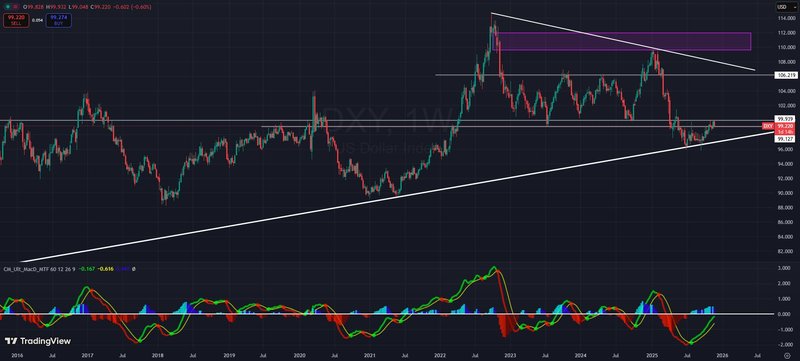Dollar slips as Fed-cut bets firm and BoJ flags gradual hikes
The dollar stayed soft as markets price another Fed cut before year-end, even as a cautious BoJ signals room for gradual tightening and the ECB warns core inflation needs more cooling. U.S. equities firmed and 10-year yields dipped below 4%, reinforcing pressure on the greenback.

Fed-cut expectations anchor risk appetite; 10-year yields back under 4%
BoJ’s Noguchi says hikes can resume “step by step” as yen weakness turns problematic
Beige Book: activity flat, labor demand eases, cost pressures persist
ECB’s Lane: non-energy inflation still above target; wage cooling expected
Dollar on the back foot as risk tone improves
The dollar remained broadly weaker as futures markets firmed expectations for another risk-management cut from the Federal Reserve before year-end. Softer U.S. 10-year Treasury yields—briefly back below 4%—and a rebound in U.S. equities kept the risk backdrop supportive for higher-beta currencies, reinforcing downside pressure on the greenback.

Source: TradingView
BoJ: gradual tightening back on the table
Bank of Japan board member Asahi Noguchi said the BoJ could resume rate hikes once U.S. tariff risks recede, stressing any move should be “measured, step by step.” He cautioned that keeping real rates very low for too long risks amplifying yen depreciation and unwanted inflation via higher import costs, while potentially overheating the export channel. What was once a tailwind in deflation can morph into a headwind as supply constraints bind and pass-through intensifies. The remarks keep a gradual-normalization narrative alive even as policymakers tread carefully.
Fed Beige Book: flat activity, softer jobs, sticky inputs
The Fed’s Beige Book portrayed an economy that is essentially stalled: overall activity “little changed,” consumer spending slipping again, and manufacturing only slightly better despite tariff uncertainty. Labor demand eased—about half of Districts reported weaker hiring needs—and wage gains were described as “modest,” consistent with ongoing loosening in labor markets. Input costs remained under pressure, particularly in manufacturing and retail, with uneven pass-through to selling prices. Near-term pricing plans were mixed, hinting at a bumpier disinflation path into early 2026.
ECB: core still too warm, but wage deceleration in sight
ECB chief economist Philip Lane said headline inflation’s proximity to target is flattered by energy deflation, while non-energy components remain “well above 2%.” Further cooling is needed to secure a durable return to target, though wage dynamics are expected to decelerate. On tariffs, Lane argued the hit to Europe may be cushioned by firm U.S. demand—supported by AI-related expansion and fiscal outlays—allowing some pass-through of costs to U.S. importers. Still, he flagged a “very big reconfiguration” of trade—China to Southeast Asia, Southeast Asia to the U.S., and China’s rising footprint in Europe—intensifying competitive pressure on European firms at home.
